AVE – KATHINKAs GESANG – HARLEKIN
Stockhausen instrumental music-theatre masterpieces at Teatro Lirico
Laura Faoro, flutes
Roberta Gottardi, clarinet and basset horn
Sound engineering / live electronics, Francesco Canavese, Tempo Reale
Lighting design, Luciano Gottardi, Massimo Consoli
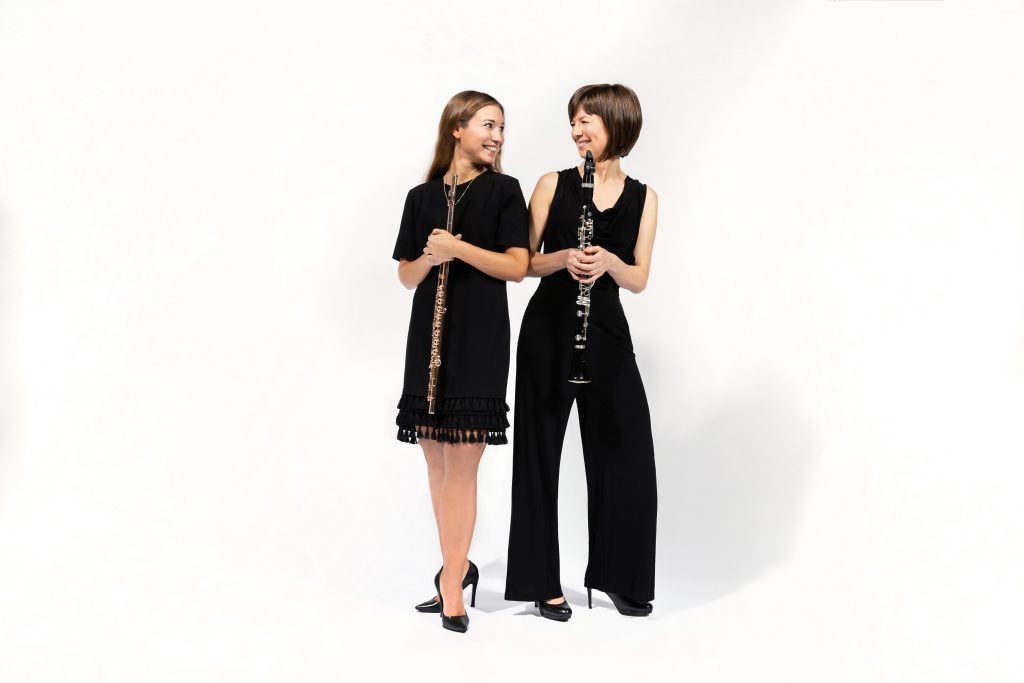
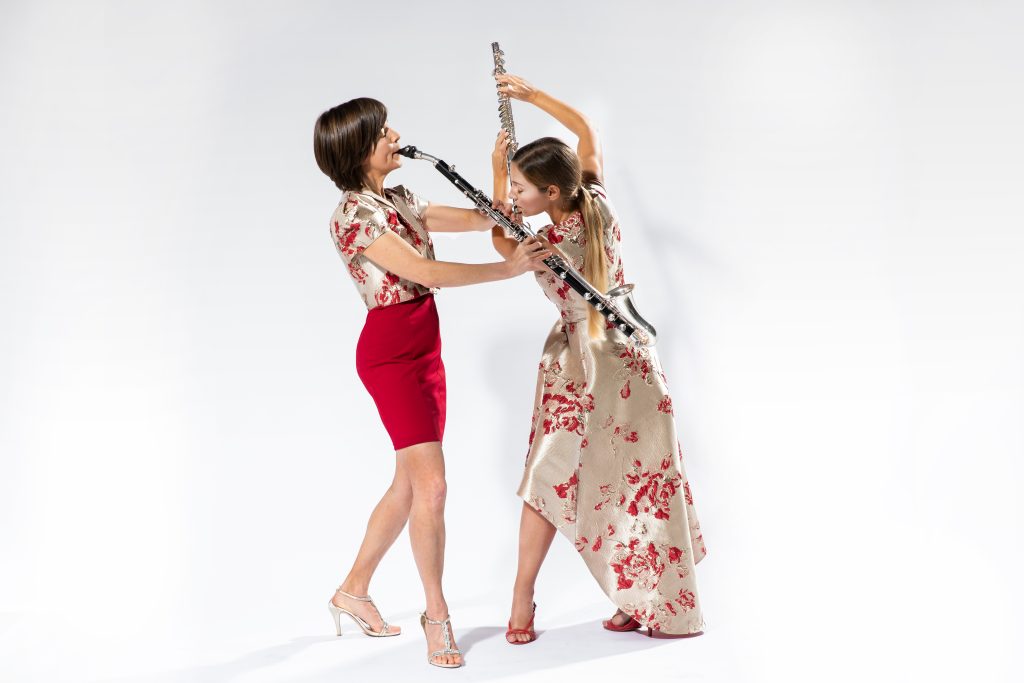
An immersion in the musical theatre of the German composer: a unique performance reproposing together – for the first time in Italy and abroad – his greatest masterpieces for flute and clarinet, written for his two muses and musicians, Suzee Stephens and Kathinka Pasveer.
AVE
KATHINKAs GESANG
HARLEKIN
Teatro Lirico “Giorgio Gaber”
Tuesday, June 16th 2022
Via Larga 14 – 20122 – Milan, h. 9 P.M.
Tickets available soon
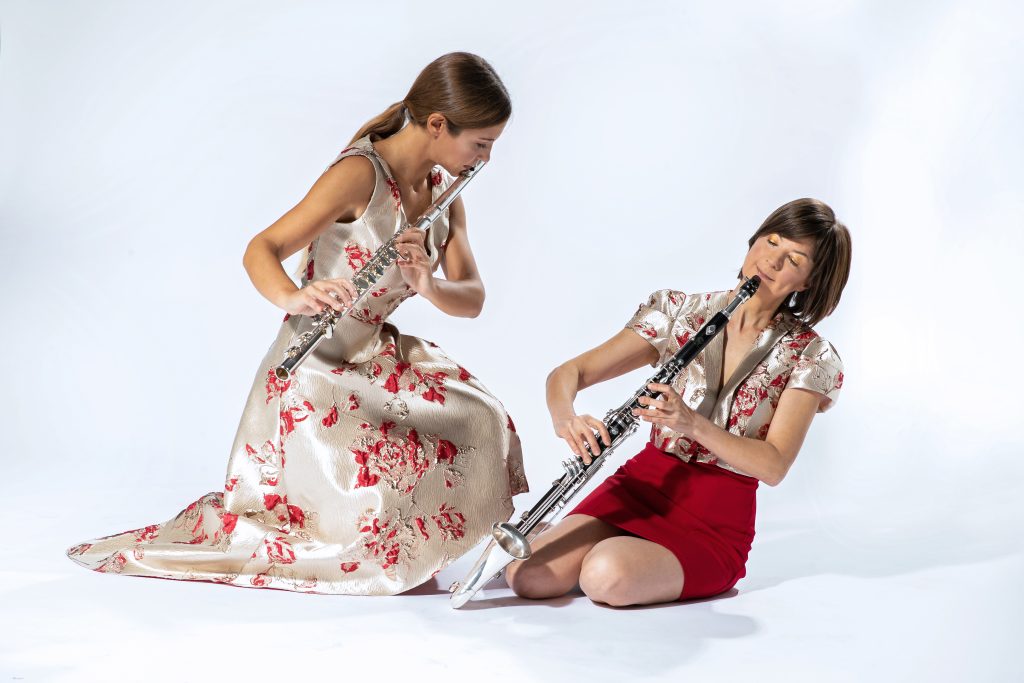
Roberta Gottardi e Laura Faoro, are both fully involved in musical theatre: both winners of the Stockhausen Prize [Roberta in 2001, awarded by Stockhausen himself; Laura in 2019] and following a rigorous study conducted directly with Suzee Stephens and Kathinka Pasveer, they bring on stage a show of “instrumental theatre”, a brand new focus on the greatest masterpieces for flute and clarinet composed by Stockhausen:
HARLEKIN, for clarinet, KATHINKAs GESANG for flute and electronics (in the scenic original form), and AVE da MONTAG aus LICHT, for alto flute and basset-horn.
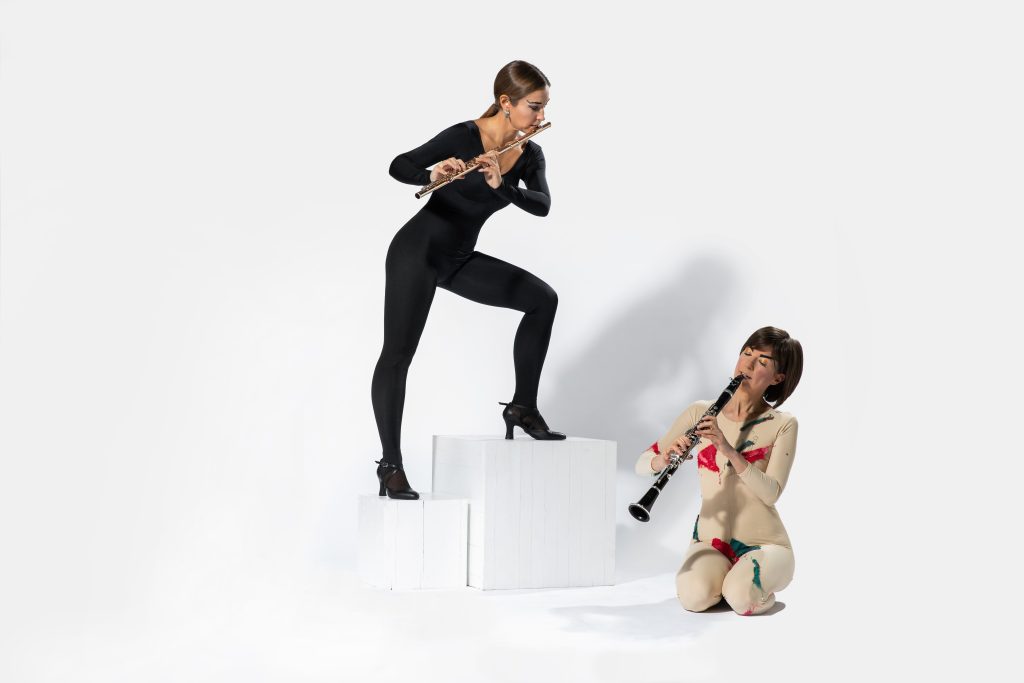
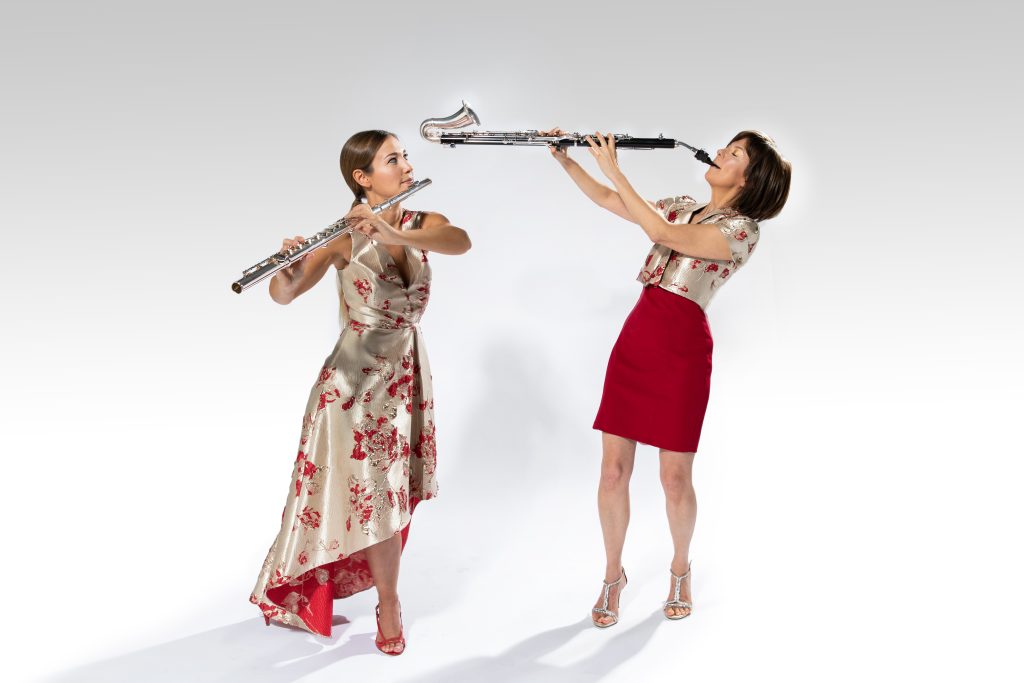
AVE for alto flute and basset-horn (1984-85)
Taken from the third act of the opera MONTAG aus LICHT, AVE closes the scene of Eva’s spell (Evas Zauber). It’s a 23-minute duet where flute and basset-horn take on the role of real surrealistic characters, theatrically interpolating sounds, mime and movements.
It is the story of an encounter-clash, a slow mutual unveiling that opens with Eva (the basset-horn), alone on the scene while contemplating herself in a mirror, in a blind counterpoint with an invisible flute.
The gradual encounter between the two figures, thus, brings out their reciprocal characters, opposite and complementary: the femininity of Eva contrasts with the figure of the flutist disguised as a man, in a game of “musical” seduction where the two apparent “monologues” gradually converge in a final section that sublimates the meeting into a sort of mystic union with the flavor of a prayer, AVE, in fact.
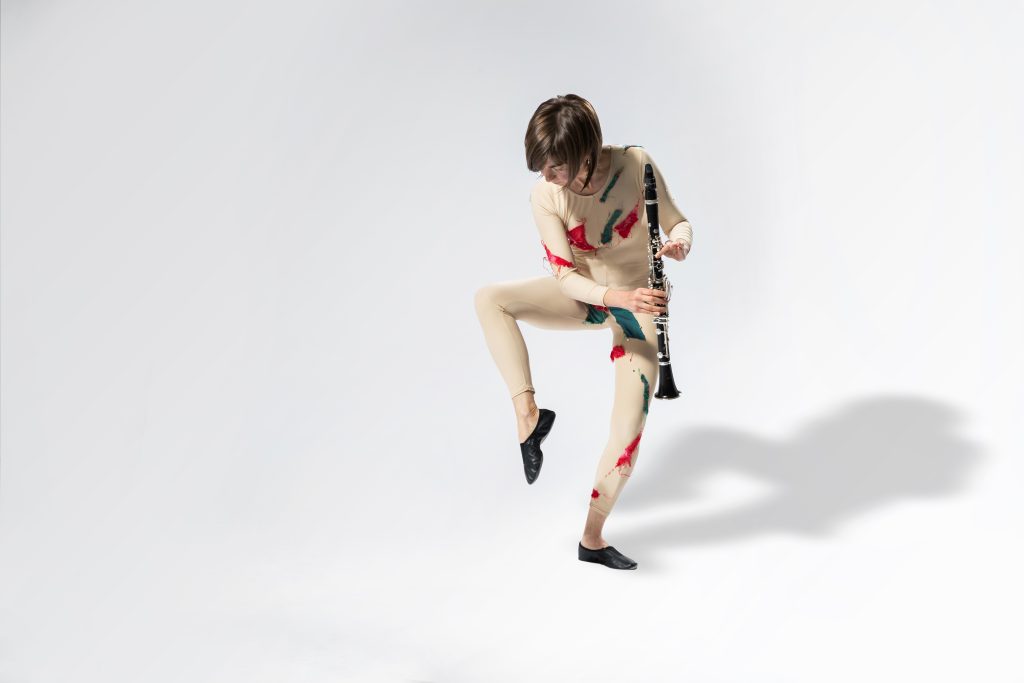
HARLEKIN for clarinet, 1975
The traditional character is born again in a new form: Harlekin is now a musician. He plays and dances in rapid circular figures from which a concentric spiral emerges. Harlekin is a messenger of dreams.
The protagonist then turns into a cheerful builder elaborating his melody by getting closer to the audience and later becoming a lovesick and charming poet, a pedantic teacher drawing his own melody in the air, a crafty joker having fun and getting mad with his instrument, a passionate dancer lost in the dance to the point of forgetting the notes of his song.
In the end, when almost nothing remains of the theme except rhythm, the protagonist remembers the small circular figures of the beginning. Transforming himself into a twirling exalted spirit, he takes up again a spiral using the sounds and the steps, playing – for the last time – the notes of his melody with a bird’s screech.
KATHINKAs GESANG als LUZIFERs REQUIEM for flute and electronics, 1983
It constitutes the whole 2nd scene of SAMSTAG aus LICHT, a monumental cycle of 7 stage works conceived by Stockhausen for each day of the week. In SAMSTAG Kathinka’s “song” is the Requiem for Lucifer, a character however only partially in line with the common idea of this figure, re-read by Stockhausen as the eternal imperfect and, therefore, the archetype of every earthly soul. In this sense this Requiem is thought “for every living thing looking for the eternal light”. Kathinka’s song is built as a sort of soul ascension in 24 stages, following the musical form of the “24 etudes”.
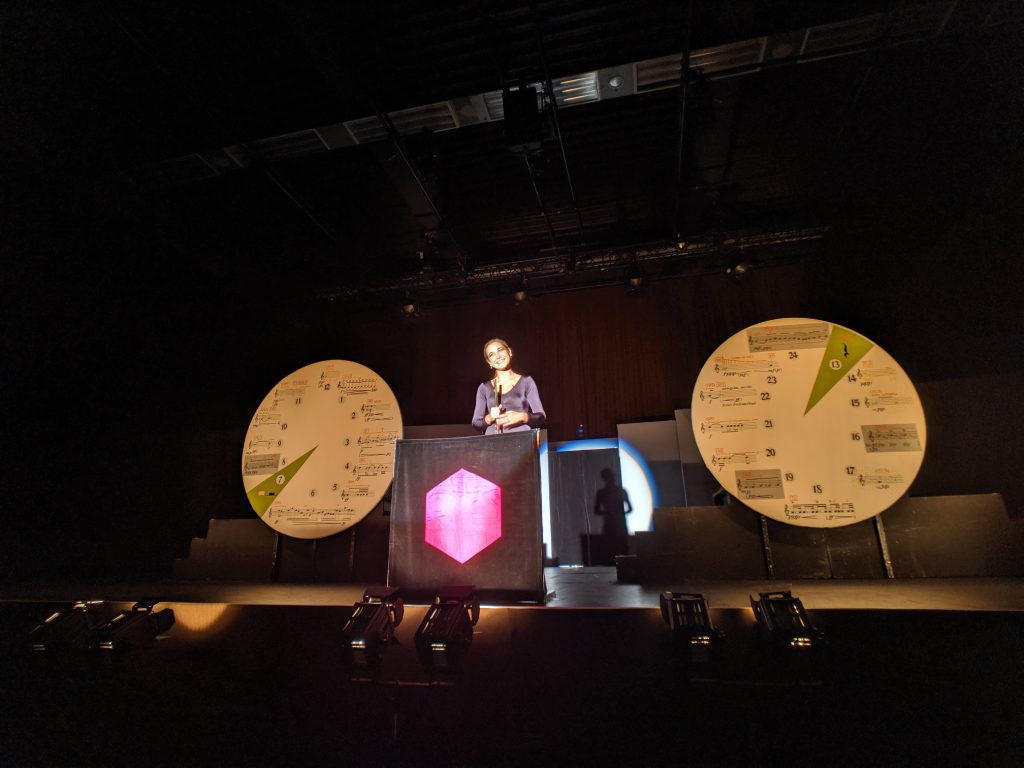
A ritual in music aimed at detaching the listener from the mortal senses (the 5 senses to which Stockhausen adds the thought). Each stage/etude is more difficult than the previous one, exploring new ways of expression of the flute timbre starting from the Lucifer formula. The process of elevation – accomplished through the difficult completion of each level – is recalled by two huge Mandalas, that, in their segments, report the inspiring idea of each stage, and dominate the scene with their grandeur. The cat flutist (the animal figure of SAMSTAG) ascends moving from one mandala to the other until a final spiral dance, to disappear in a long laughter in music, behind a curtain, where the 11 trumpet sounds (core of the Lucifer formula) and a cry of liberation … towards a new reincarnation, towards eternal extinction or towards the entrance into the “LIGHT”.
The answer is left open by Stockhausen himself.
A few months after the premiere, Stockhausen decided to make a new version for flute and electronics in hexaphony, declaring to have obtained sounds of a beauty never experienced before, “a magical world that surrounds the solitary voice of the flute”.